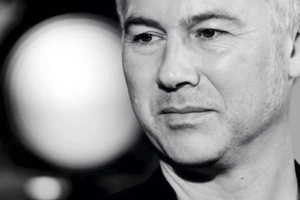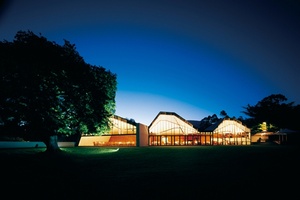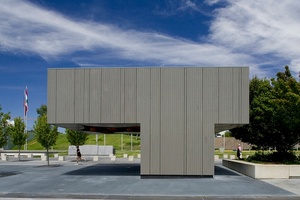Seeing something in a new way
Does your practice follow a “topology of urges and fascinations”? Stephen Olsen took in Richard Blythe's recent talk as part of Victoria University of Wellington’s Master’s Reviews Series.

As avenues for attaining a PhD go, the path being blazed by Dr Richard Blythe of Melbourne’s RMIT is gaining momentum.
A world-leading proponent of design research in architecture the good doctor has been visiting New Zealand to spread the word about a new framework he has been instrumental in developing for practice-based doctorates.
Speaking at Victoria University of Wellington’s Master’s Reviews Series this week, Blythe took the audience on a whistle-stop journey across both his own developing philosophy and a detailed set of insights drawn from PhD presentations aligned to the new framework at satellite bases in Europe.
Headlining his evolving lecture as The Ticklish Subject of Architecture, Blythe allowed himself to revel in the work of the graduates of the RMIT PhD program.
His architectural tiki tour began with a vignette of a Belgian architect haunted by reconstructing the memory of his grandmother’s house, restricting themselves to drawing only the things that could be faithfully remembered from a distant childhood and translating those forward into a series of intricate models.

From there it proceeded to an Estonian architect graduating at RMIT’s Barcelona campus who was fascinated with the problem of occupying and repairing a relationship between public spaces that had been lost to private spaces during the days of occupation by the Soviet Union.
Next followed brief tales of British and Irish architects, each dedicated to satisfying their respective urges in architecture. Be that to transform places of engineering into places of human habitat, or to conduct architecture from a participative musician’s point of hearing as a form of “sound attenuation… looking (at architecture) through his ears”.
A takeaway invocation from these leading examples was that anyone developing a convincing architectural practice must clearly and crucially discern their own “topology of urges and fascinations”.
A proud native Tasmanian, Blythe entered into his own reflections – “at the risk of doing a selfie” – with a close reading of an iconic image of Tasmanian wilderness by famed photographer Peter Dombrovskis.
As well as retrofitting the photographic image to his first encounters with landscape in a contentious public sphere, Blythe also commented on the “technological suspension” inherently frozen within such images and delivered to us as “the way scenes are seen”.
As a co-founding director of the renowned architectural practice TERROIR, Blythe describes the practice’s formative work in terms of “experiential displacements between for example exteriors and interiors articulated in the TERROIR lexicon as the ‘elephant inside the snake’ [derived from Antoine de Saint-Exupéry’s The Little Prince]”.
Blythe selected two TERROIR pieces to highlight.

The first harked back to a decade ago, Peppermint Bay south of Hobart – a building subsequently included in a list of top 100 Australian Architecture projects. Shaped to encompass its immediate external landscape, this was a project he happily considered could still be newly visited as being in keeping with other ordinary and extraordinary landscape features, natural and manufactured.
The second, from 2008, consisted of a pair of small prosaic amenity kiosks placed on the edge of Canberra’s Lake Burly Griffin. The two small, blank timber boxes were installed in a “momentarily wrong” alignment, with a non-symbolic “sleeve tug” provided by a surprising sculptural and artistic element – “just enough to give pause for people to re-engage with the place they’re in”.
Dr Blythe rounded off his lecture with a parting observation that the “ticklish” side to architecture comes about from resisting any temptation to practice an architecture that forces meaning on a place, by instead “allowing for a certain amount of opposition that mounts to a possibility of seeing something in a new way”.









